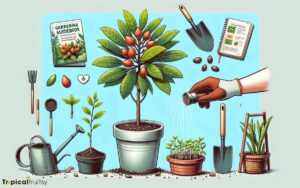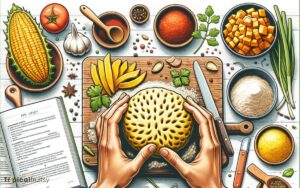How Do You Know When Ackee Is Ripe? Explained!
Determining the ripeness of ackee, a fruit integral to Jamaican cuisine, requires careful observation due to its unique ripening cues and the potential toxicity of its premature form.
Recognizing a ripe ackee involves noting the transition of its skin from green to a bright red with yellow portions, indicating it has reached maturity.
A ripe ackee will naturally split open, revealing its glossy black seeds and spongy, yellow arils – a clear sign it is ready for consumption.
The texture of the fruit should yield slightly under pressure, and a subtle, nutty fragrance may be present. It is also important to consider the typical harvesting season, which can influence the ripeness.
Above all, safety is paramount; unripe ackee contains toxic hypoglycin A and must be avoided.
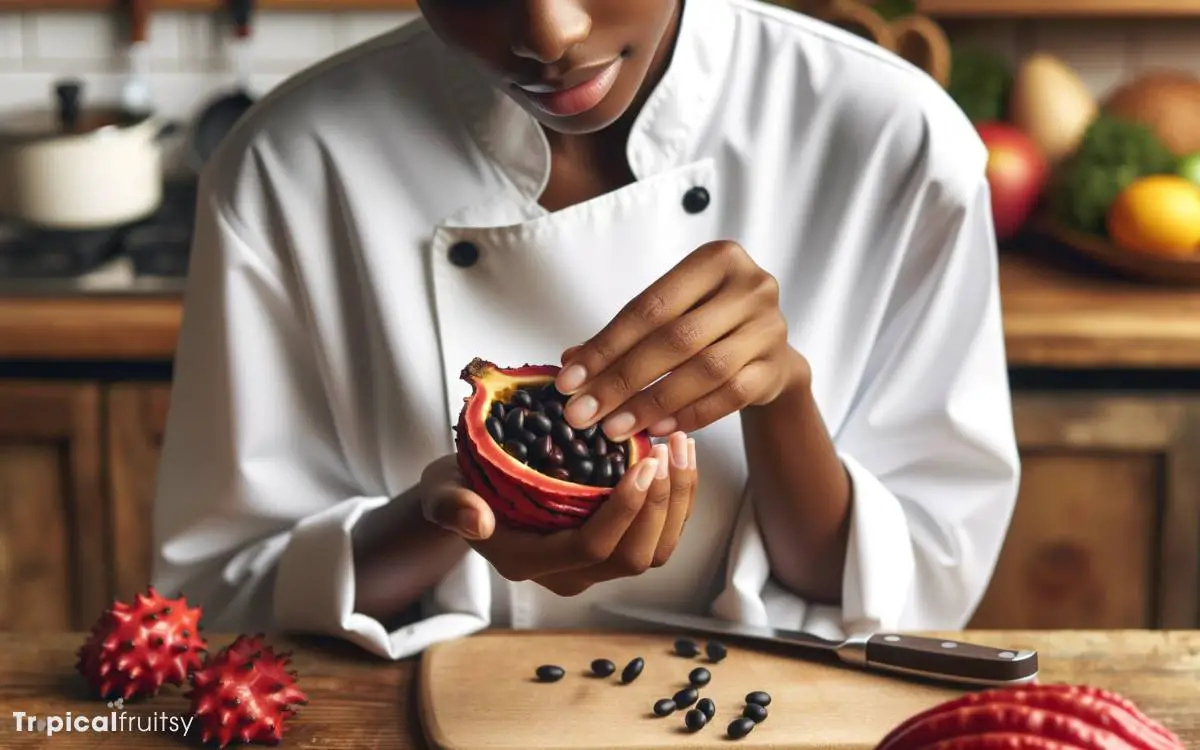
Key Takeaway
Ackee’s Distinctive Color Shift
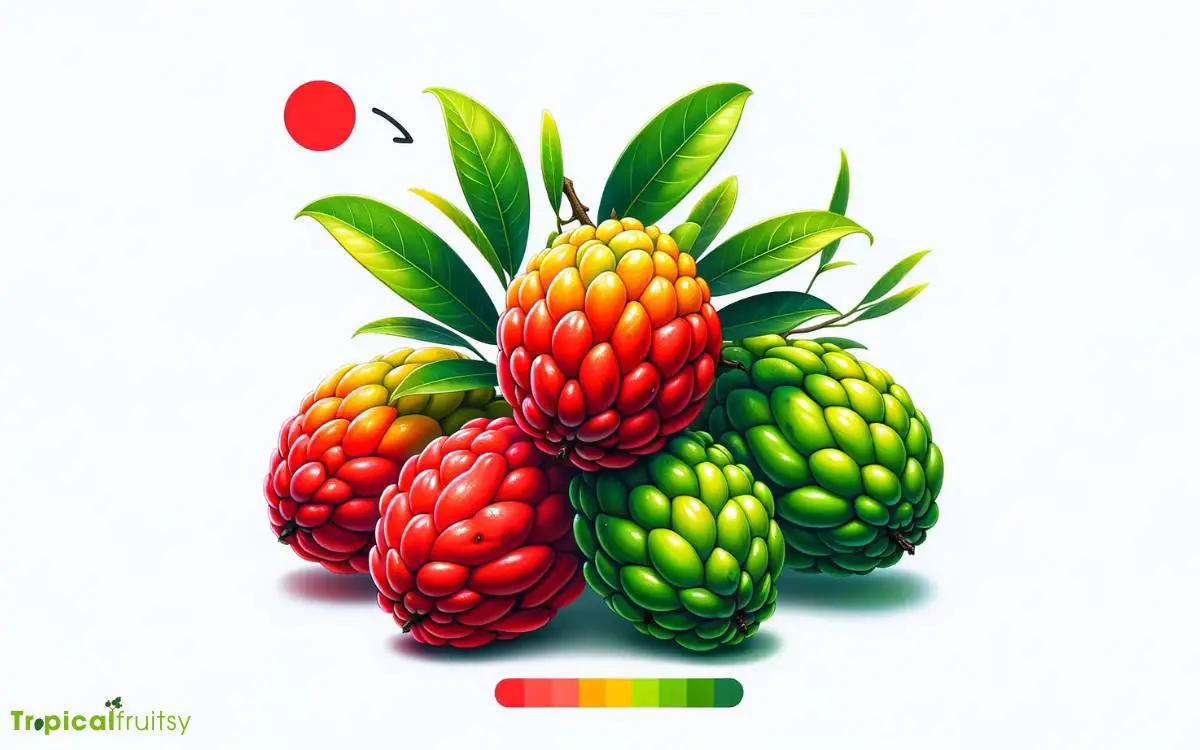
Regarding the maturation of ackee, a distinctive color shift from green to a bright red-yellow hue is a primary indicator of ripeness.
This chromatic transition is not merely a visual cue but is underpinned by complex biochemical processes.
The green coloration, indicative of chlorophyll, diminishes as the fruit’s chloroplasts degrade during ripening. Concurrently, carotenoid pigments, responsible for the red and yellow hues, accumulate in the pericarp.
This color metamorphosis is accompanied by a softening of the fruit’s protective aril and the parting of the protective pods, revealing the black seeds ensconced within.
These morphological changes are critical markers, which, when assessed in conjunction, provide a reliable gauge for the ripeness and edibility of ackee, a fruit of cultural and culinary significance in regions such as the Caribbean.
Pod Behavior and Opening
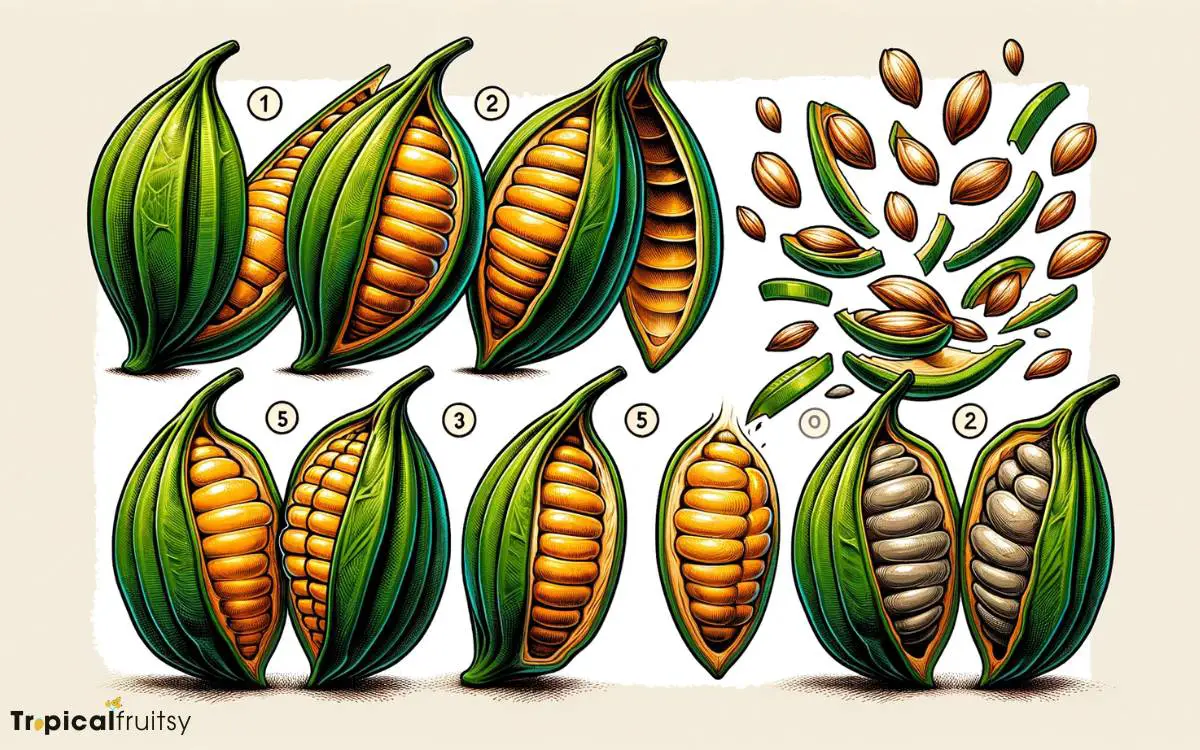
The pod of the ackee fruit serves as a natural barometer for ripeness, spontaneously splitting open when the internal conditions signal full maturity.
This dehiscence is a critical indicator, as premature harvesting can result in toxic consequences due to the presence of hypoglycin A.
The following table delineates the stages of pod opening:
| Stage | Pod Condition | Ripeness Indication |
|---|---|---|
| 1 | Pod intact | Unripe |
| 2 | Slight crack | Approaching ripeness |
| 3 | Pod halves slightly ajar | Nearly ripe |
| 4 | Pod fully open | Ripe and safe to eat |
Analysis of the pod’s physical behavior provides an empirical method for assessing ackee’s ripeness.
As the pod transitions from a sealed entity to a fully open state, it reflects the culmination of an internal maturation process.
With the pod’s behavior thoroughly examined, attention must now turn to understanding the texture and firmness indicators of ripe ackee.
Texture and Firmness Indicators
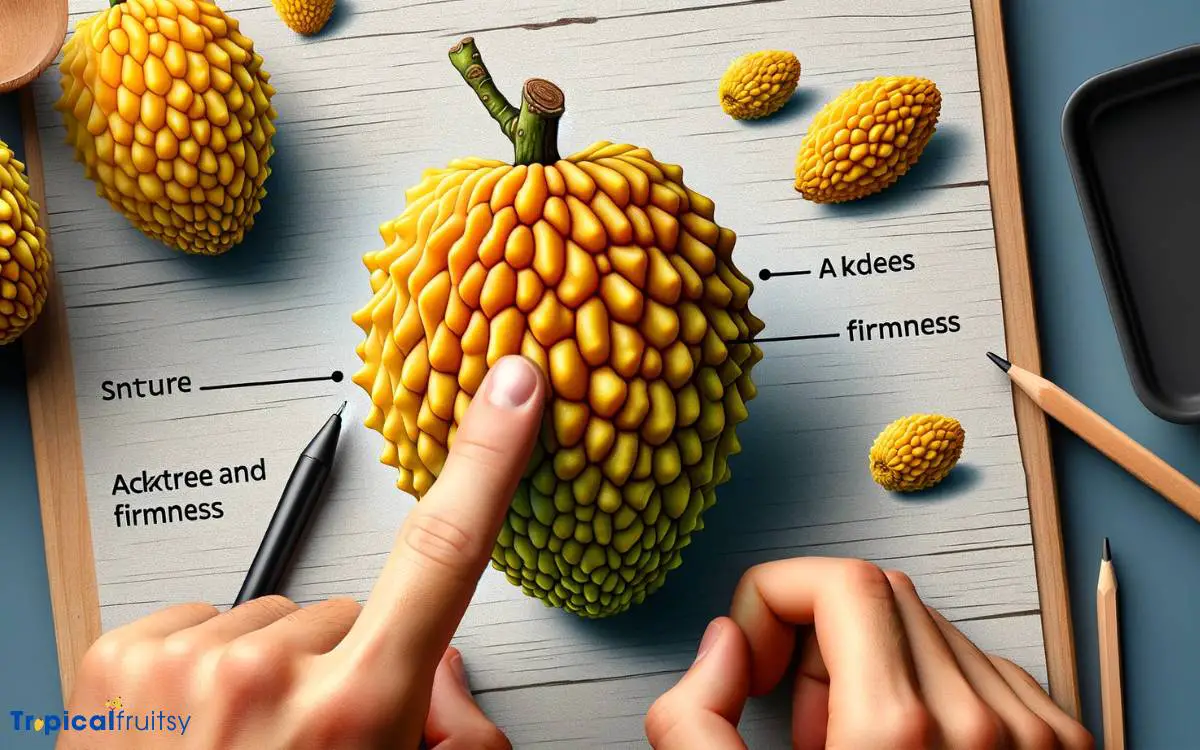
An ackee’s readiness for consumption extends beyond pod behavior, with the fruit’s texture and firmness serving as critical indicators of ripeness.
A mature ackee will exhibit a soft yet resilient flesh, indicative of its prime state for culinary use. The firmness of an unripe ackee is characteristically rigid, reflecting an underdeveloped endocarp that is unsuitable for ingestion due to potential toxicity.
Conversely, an overripe ackee may display a compromised structural integrity, with a mushiness that undermines the fruit’s culinary value.
The discerning harvester or consumer relies on tactile examination to ascertain the optimal balance between suppleness and solidity, ensuring the selection of ackees that have reached a peak in edibility.
With the tactile assessment completed, the olfactory evaluation begins, as the ackee aroma evolution provides further nuance to ripeness determination.
Ackee Aroma Evolution
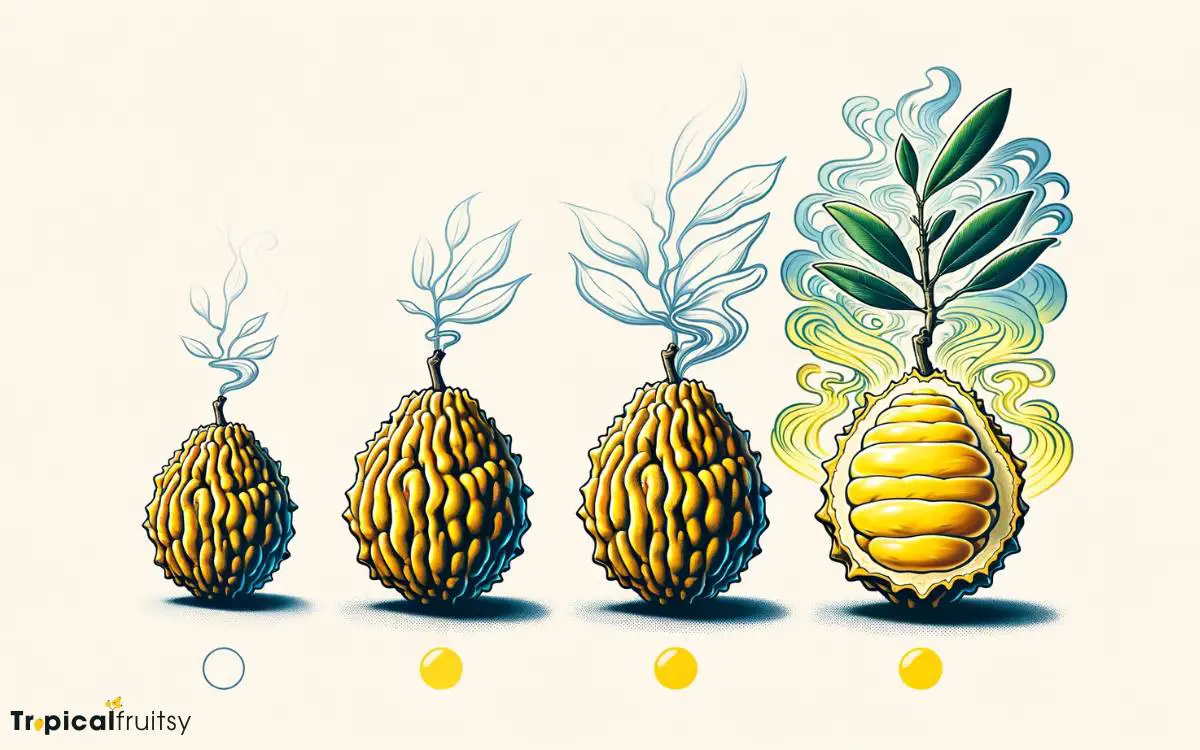
While tactile indicators are essential for assessing ackee ripeness, the fruit’s scent also undergoes a distinctive transformation as it matures, providing an olfactory clue to its readiness for consumption.
The aroma of ackee, which is initially subtle, becomes notably more pronounced and complex as the fruit reaches the peak of ripeness.
Expertise in discerning these olfactory changes is crucial, as it complements the visual and tactile assessments.
The evolution of ackee’s aroma can be characterized as follows:
- Initial Stage: Faint, green, and grassy notes predominate, indicating under-ripeness.
- Intermediate Stage: A gradual emergence of a richer, somewhat nutty fragrance as it progresses towards maturity.
- Pre-ripe Stage: The scent intensifies, with a balance of creamy and fruity undertones.
- Fully Ripe: A robust and pleasant aroma signifies that the ackee is ready for consumption, with no hint of rawness.
Timing and Seasonal Patterns
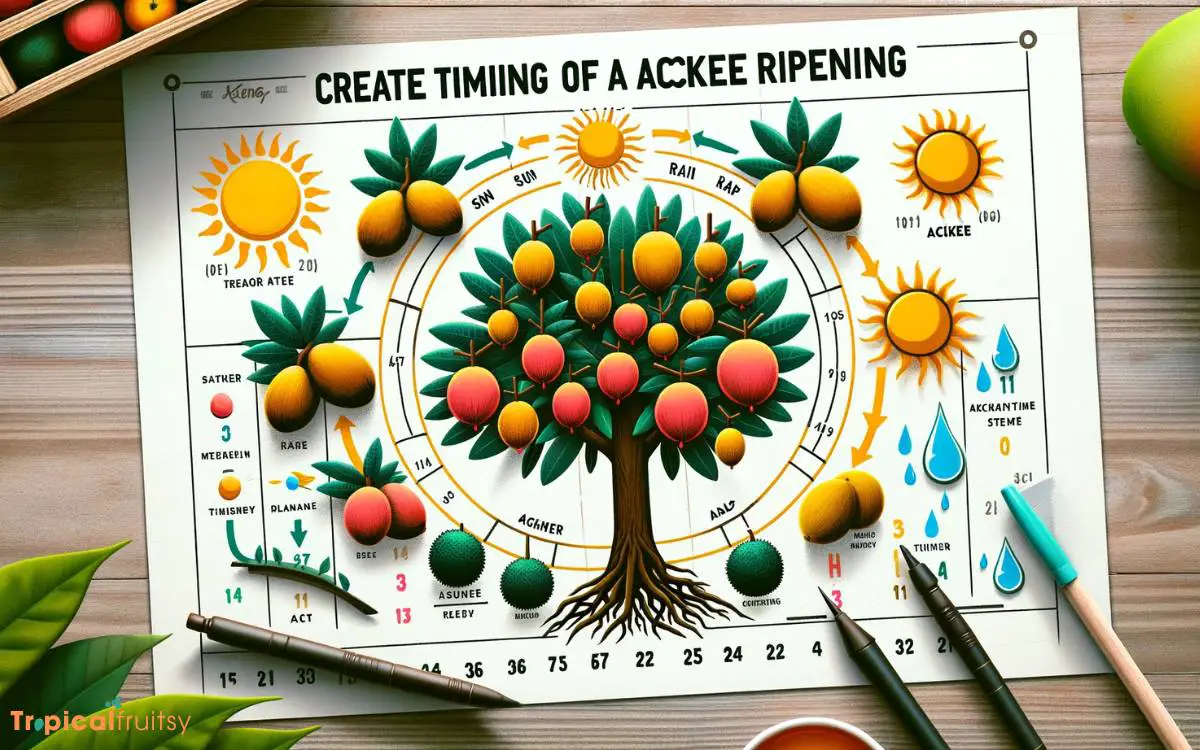
Understanding the temporal dynamics of ackee fruit maturation is critical for optimal harvest yield and quality.
Seasonal fluctuations markedly influence the phenological stages of ackee, with specific climatic conditions triggering the transition towards peak ripeness.
Consequently, discerning the harvest time indicators aligned with these patterns is essential for determining the precise moment for collection to ensure safety and palatability.
Harvest Time Indicators
Monitoring the seasonal patterns and timing of ackee’s maturation is crucial for determining the optimal harvest period.
Ackee, Blighia sapida, typically follows a cyclical pattern that aligns with specific climatic conditions prevalent in tropical environments where it thrives.
Precision in harvesting is paramount as premature or overripe fruits may not meet culinary or safety standards, due to the presence of hypoglycin A, a toxic compound which diminishes as the fruit ripens.
- Color Transformation: Ackee’s skin transitions from green to a bright red to yellow-orange hue, indicating readiness for harvest.
- Pod Opening: A naturally split pod, revealing the black seeds and yellow arils, signals full maturity.
- Flesh Firmness: The arils should be soft to the touch but not overly mushy, suggesting over-ripeness.
- Seasonal Timing: Typically, ackee fruit matures during dry seasons, with peaks observed from January to March and June to August, depending on regional climate variations.
Peak Ripeness Seasons
Ackee fruit typically reaches peak ripeness during the dry months, with regional variations influencing the exact timing of the season.
The fruit’s maturation is dependent on a constellation of climatic factors, including temperature, humidity, and rainfall patterns.
| Region | Peak Ripeness Season | Climate Notes |
|---|---|---|
| Caribbean | January – March | Minimal rainfall, warm temps |
| Central America | February – April | Dry season, moderate temps |
| Southeast USA | June – August | High humidity, hot temps |
Is the Taste of Ripe Ackee Different from Unripe Ackee?
The taste of ripe ackee is distinct from the unripe fruit. When ripe, ackee has a creamy texture and a subtle, nutty flavor. Unripe ackee, on the other hand, is more bitter and has a firmer, starchy texture. In general, what ackee tastes like depends on its ripeness.
Safety Precautions for Harvesting
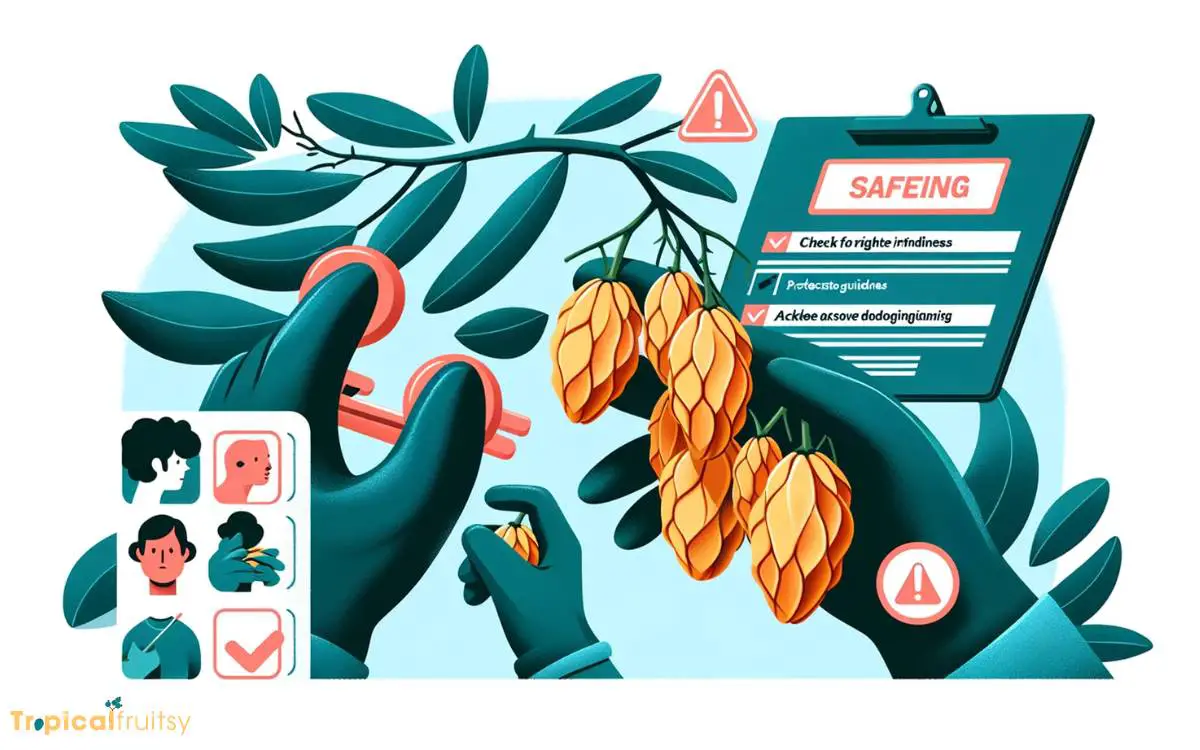
When harvesting ackee, it is crucial to identify fruit that has naturally split open, as this indicates ripeness and safe consumption levels of hypoglycin A, the toxin present in the unripe fruit.
Picking unopened ackee pods can pose a severe health risk, given that premature consumption leads to Jamaican Vomiting Sickness, a potentially fatal condition.
Therefore, rigorous adherence to harvesting protocols, including visual inspection and tactile assessment, is mandatory to mitigate the risk of toxin exposure.
Recognizing Ripe Ackee
Regularly inspecting the ackee fruit for specific ripeness indicators is crucial for safe harvesting, as premature consumption can lead to toxic effects.
The fruit of the ackee tree (Blighia sapida) contains hypoglycin A, a potentially lethal toxin that dissipates only when the fruit is fully ripe. A rigorous assessment strategy is therefore implemented to determine the optimal harvest time.
Key ripeness indicators to observe are:
- Natural Splitting: The ackee pod should open naturally on the tree, revealing the seeds and aril.
- Color Transformation: A change from green to a bright red or yellow indicates maturity.
- Flesh Texture: The aril should be soft to the touch, without any hardness.
- Seed Detachment: Seeds should separate easily from the pod, suggesting that the aril is edible.
Avoiding Unopened Fruit
In adherence to safety protocols, it is imperative to avoid harvesting ackee fruit that has not yet naturally opened on the tree.
This precaution is due to the presence of hypoglycin A, a naturally occurring toxin found in higher concentrations within the unripe ackee arils.
Hypoglycin A diminishes as the fruit ripens and the protective pods open, signaling a decline in toxicity to levels safe for human consumption.
Prematurely plucked ackee can result in the ingestion of dangerous toxin levels, leading to Jamaican vomiting sickness – a potentially fatal condition.
Therefore, the collection of ackee must only commence when the fruit’s pods have spontaneously split, revealing the edible arils and black seeds, an unequivocal indicator of ripeness and reduced hypoglycin A content.
Conclusion
The ripeness of ackee is discerned through a confluence of botanical signs. The metamorphosis in hue, the natural dehiscence of the pod, the tactile feedback of its flesh, the olfactory notes it emits, and the temporal frame of its maturation all serve as critical indicators.
Vigilance in observing these cues is paramount, as premature harvest poses grave health risks. Thus, the act of determining ackee ripeness merges scientific observation with traditional prudence.


